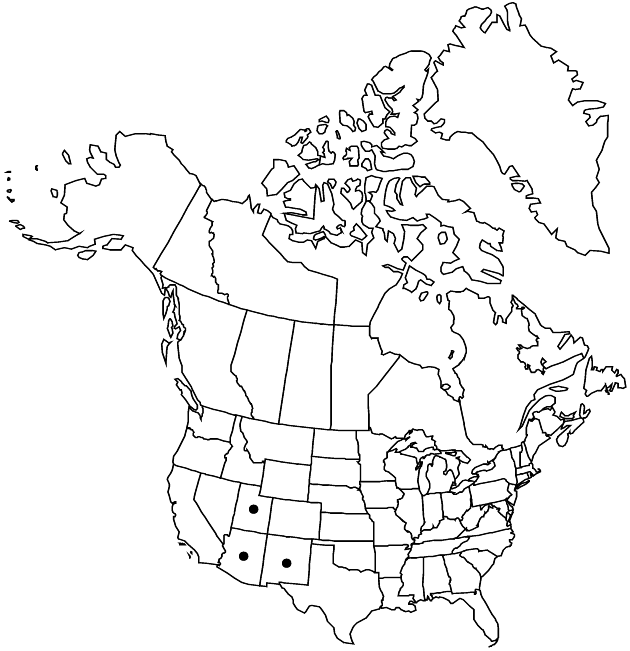Difference between revisions of "Psilostrophe sparsiflora"
Proc. Biol. Soc. Wash. 16: 23. 1903.
Basionym: Riddellia tagetina var. sparsiflora A. Gray
Treatment appears in FNA Volume 21. Treatment on page 454.
FNA>Volume Importer |
FNA>Volume Importer |
||
| Line 49: | Line 49: | ||
|publication year=1903 | |publication year=1903 | ||
|special status= | |special status= | ||
| − | |source xml=https://jpend@bitbucket.org/aafc-mbb/fna-data-curation.git/src/ | + | |source xml=https://jpend@bitbucket.org/aafc-mbb/fna-data-curation.git/src/8f726806613d60c220dc4493de13607dd3150896/coarse_grained_fna_xml/V19-20-21/V21_1140.xml |
|tribe=Asteraceae tribe Heliantheae | |tribe=Asteraceae tribe Heliantheae | ||
|subtribe=Asteraceae (tribe Heliantheae) subtribe Gaillardiinae | |subtribe=Asteraceae (tribe Heliantheae) subtribe Gaillardiinae | ||
Revision as of 15:30, 18 September 2019
Biennials or perennials (rarely flowering first year), 10–40+ cm. Stems ± strigillose (greenish, sometimes ± villous in proximal axils). Heads in ± corymbiform arrays. Peduncles 8–12(–25+) mm. Involucres 4–6 mm. Ray florets (1–)2–3(–4); corolla laminae (6–)8–10+ mm, reflexed in fruit. Disc florets 7–9. Cypselae usually glabrous, sometimes gland-dotted; pappi of 4–5 lanceolate to lance-subulate scales 2–3 mm. 2n = 32.
Phenology: Flowering May–Sep.
Habitat: Grasslands, pinyon-juniper scrub, sagebrush scrub, yellow pine forests
Elevation: 900–2200 m
Distribution

Ariz., N.Mex., Utah.
Discussion
Selected References
None.
Lower Taxa
None.